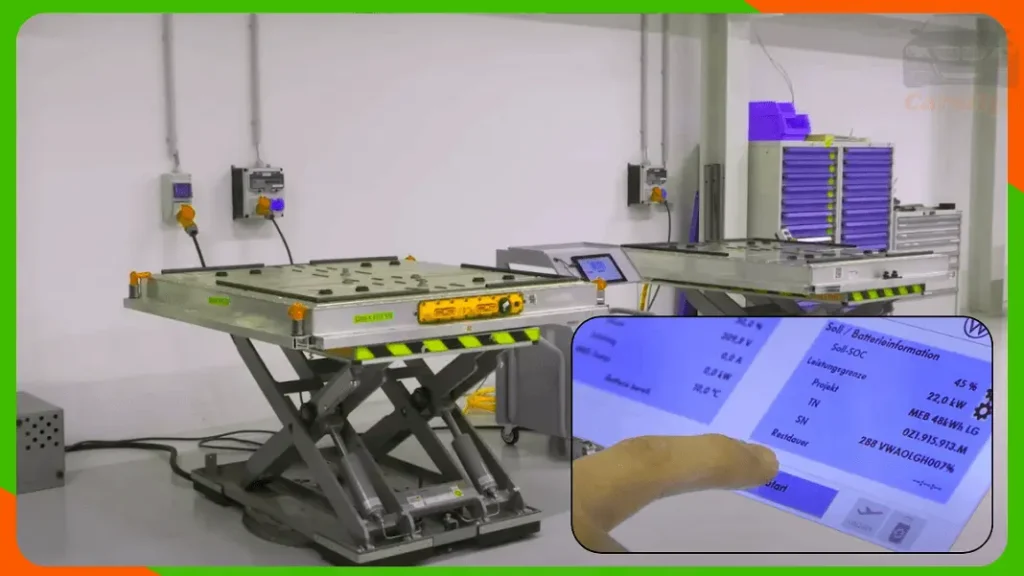Imagine the thrill of driving your electric vehicle (EV), feeling the satisfaction of zero emissions and contributing to a cleaner planet. As you park it for the last time, a pressing question lingers: What happens to the battery that powered your eco-friendly ride? EV battery recycling is not merely a trend; it’s a critical process that protects our environment and paves the way for a sustainable future. In this article, you’ll discover the ins and outs of EV battery recycling, the economic implications, and why this practice matters now more than ever.
Table of contents
Understanding the Importance of EV Battery Recycling

As electric vehicles gain popularity, the environmental impact of discarded batteries becomes increasingly significant. EV battery recycling plays a vital role in mitigating this impact. Here’s why it matters:
Environmental Protection
- Preventing Landfill Waste: Discarded batteries pose serious environmental hazards. Many components are toxic and can leach harmful chemicals into the soil and water. Recycling helps keep these materials out of landfills.
- Conserving Natural Resources: By recycling, you contribute to conserving valuable materials such as lithium, cobalt, and nickel, reducing the need for new mining operations that can disrupt ecosystems.
Economic Benefits
- Creating Jobs: The recycling industry can create numerous jobs, from collection to processing.
- Reducing Costs: Recovering materials through recycling is often cheaper than mining new resources. This can lead to lower prices for new batteries.
Emotional Connection
When you engage in EV battery recycling, you’re not just protecting the environment; you’re part of a movement towards a more sustainable future. Imagine the satisfaction of knowing you’ve contributed to a cleaner planet for future generations.
The EV Battery Lifecycle
Understanding the lifecycle of an EV battery can help you appreciate the importance of recycling. Here’s how it typically unfolds:
From Production to Disposal
- Manufacturing: The process begins with the extraction of raw materials, which are then used to produce the battery.
- Use Phase: The battery powers your vehicle for several years, providing efficient energy for your travels.
- End-of-Life Considerations: After about 10 to 15 years, the battery’s performance diminishes. It’s crucial to handle this phase responsibly to avoid environmental harm.
End-of-Life Considerations
So, when should you consider a battery “used up”? Typically, an EV battery is considered at the end of its life when it retains only 70-75% of its original capacity. This may take over a decade of usage, depending on driving habits and conditions.
The EV Battery Recycling Process

EV battery recycling involves several critical steps to recover valuable materials and ensure responsible disposal. Let’s break down the process:
Collection and Transportation
The journey begins with collecting used batteries from various sources, including:
- EV Manufacturers: Many companies have programs in place to facilitate the return of old batteries.
- Dealerships: When you replace your battery, dealerships often have recycling agreements.
- Recycling Centers: These facilities serve as hubs for collecting used batteries.
Once collected, the batteries are transported to specialized recycling facilities. This step is crucial for ensuring safe handling and compliance with regulations.
Dismantling and Material Recovery
At the recycling facility, the first step is dismantling. Here’s what happens:
- Separation: The battery casing is removed to expose the internal components.
- Material Extraction: Key materials such as lithium, cobalt, and nickel are extracted. This is where advanced technology plays a vital role in maximizing recovery rates.
Table: Material Recovery Rates
| Material | Recovery Rate (%) |
| Lithium | 95 |
| Cobalt | 98 |
| Nickel | 90 |
Purification and Reuse
After extraction, the recovered materials undergo purification processes to eliminate impurities. This ensures they meet industry standards for reuse in new batteries, closing the recycling loop and minimizing waste.
Economic Aspects of EV Battery Recycling
Understanding the economics behind EV battery recycling can provide insight into its viability as a sustainable practice.
Understanding EV Battery Recycling Costs
Several factors influence the costs associated with recycling:
- Technology Used: Advanced recycling methods may increase initial costs but improve recovery rates.
- Scale of Operations: Larger facilities benefit from economies of scale, lowering per-unit costs.
- Labor Costs: Variations in labor rates across regions can affect overall expenses.
Table: Estimated Costs of EV Battery Recycling
| Cost Component | Estimated Cost Range |
| Collection & Transport | $50 – $150 per battery |
| Dismantling | $100 – $300 per battery |
| Material Recovery | $200 – $500 per battery |
| Total Estimated Cost | $350 – $950 per battery |
Is EV Battery Recycling Profitable?
The profitability of EV battery recycling is an important consideration for companies in the sector. Here are some key points:
- Rising Demand for Raw Materials: As the shift to electric vehicles accelerates, the demand for materials like lithium and cobalt is on the rise. This makes recycling a potentially lucrative business.
- Government Incentives: Various initiatives at local and national levels are designed to promote recycling, providing financial support for companies engaged in sustainable practices.
- Market Competition: The influx of new players into the recycling market can drive innovation and efficiency, making recycling operations more profitable.
Key Takeaway
If you’re considering a venture into EV battery recycling, it’s essential to understand the market dynamics and profit potential. With rising demand and supportive policies, there’s significant opportunity in this field.
Key Players in the EV Battery Recycling Industry
Several companies are leading the charge in EV battery recycling, each with its own innovative approaches. Here are a few notable names:
Redwood Materials
Founded by former Tesla CTO JB Straubel, Redwood Materials focuses on recovering critical materials like lithium and cobalt. Their commitment to creating a closed-loop battery supply chain positions them as a leader in sustainable practices.
Li-Cycle
Li-Cycle specializes in recycling lithium-ion batteries, utilizing proprietary processes that maximize recovery rates. Their focus on sustainability and efficiency has garnered them a strong reputation in the industry.
American Battery Technology Company
Dedicated to developing a sustainable supply chain for lithium-ion batteries, this company emphasizes recycling and resource recovery, making them a key competitor in the recycling landscape.
The Future of EV Battery Recycling
As the electric vehicle market expands, the future of battery recycling appears promising. Several trends are shaping this industry:
Technological Advancements
Innovations in recycling technology are on the rise, leading to better recovery rates and lower costs. Companies that invest in research and development are likely to lead the way.
Increasing Legislation
Governments around the world are recognizing the importance of recycling. Legislative measures mandating recycling practices can drive growth in the industry, ensuring that more batteries are processed responsibly.
Building a Circular Economy
A circular economy is one where resources are reused, and waste is minimized. In the context of EVs, this means designing batteries with recycling in mind from the start. As more manufacturers adopt this philosophy, we can expect to see significant advancements in sustainable practices.
Conclusion
EV battery recycling is not just an environmental necessity; it’s a vital component of a sustainable future. By understanding the recycling process, economic implications, and the importance of this practice, you can appreciate your role in promoting a cleaner planet. As demand for electric vehicles continues to rise, so does the need for effective recycling solutions. Join the movement towards sustainability support EV battery recycling today for a greener tomorrow.
Engage with your community, advocate for responsible battery disposal, and contribute to a world where resources are valued and reused. Together, we can make a difference!
Frequently Asked Questions (FAQs)
What is EV battery recycling?
EV battery recycling refers to the process of recovering valuable materials from used electric vehicle batteries, preventing them from ending up in landfills and conserving resources.
How are EV batteries recycled?
The recycling process involves several steps: collection, transportation, dismantling, material recovery, purification, and reuse. Each step is essential for ensuring responsible disposal and maximizing recovery rates.
What are the costs associated with battery recycling?
The costs can vary based on technology used, scale of operations, and labor costs. On average, recycling costs can range from $350 to $950 per battery.
Is EV batteries recycling profitable?
Yes, as demand for recycled materials grows, many companies find that recycling can be a profitable venture, especially with government incentives and increasing market competition.
What happens to materials recovered from EV batteries?
Reusing lithium and cobalt in the production of new batteries.





















